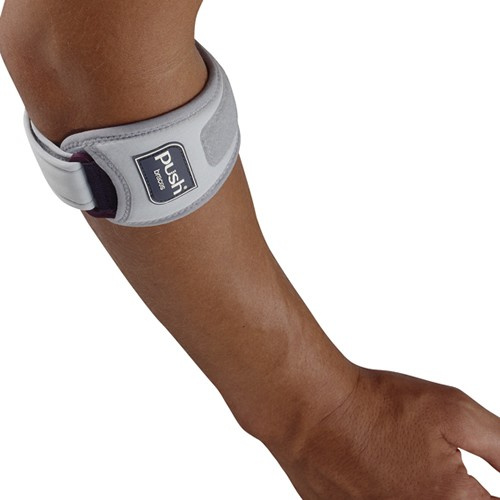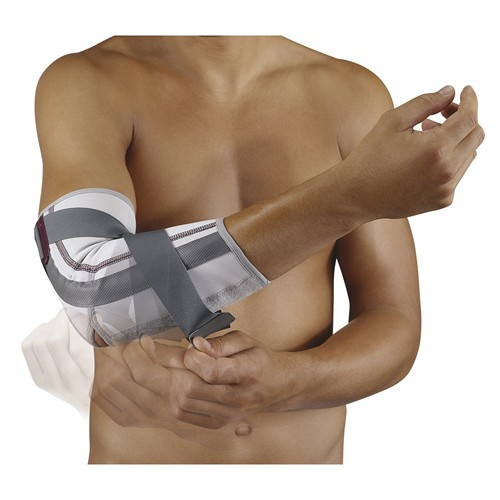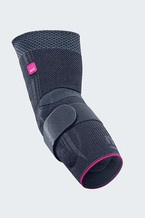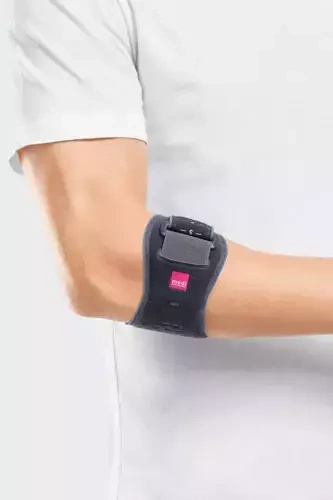Tennis Elbow Support & Arm Injury Braces
2016-01-29
Arm - the free upper extremity is divided into upper arm, forearm and hand. The arm is the human body part with the greatest mobility of all, which is based on the construction of the shoulder joint.The upper arm bone is the longest bone of the arm. Its rounded head is located proximally and is part of the shoulder joint.
Distally at the upper arm bone, two large upper arm condyles are adjoined which are positioned laterally of the elbow joint.The upper arm muscles can be divided into the bending and extending muscles. The most important upper arm muscles are positioned in the front, in order to bend the forearm . The muscles to extend the forearm are located at the backside of the upper arm.The forearm merges between elbow joint and wrist and consists of two bones: the spoke bone and the ulna bone. The forearm muscles can be also divided into two groups, the bending and extending muscles. The muscles mostly merging from the forearm move the hand as effector.
Elbow connects upper and forearm,consists of crook of the arm and the elbow joint. Due to the merging of upper arm bone, spoke bone and ulna bone, the elbow joint consists of three partial joints, which are surrounded by a common joint capsule. This capsule is reinforced by three ligaments: inner ligament, outer ligament and ring ligament. During bending and extending the elbow, a hingelike movement occurs between upper and forearm.Because of the three-part construction of the elbow joint, rotating movements of the forearm in the sense of supination and pronation are also possible, during which the spoke bone rotates around the ulna bone. Several large nerve cords run parallel along the upper arm bone and innervate the flexors and extensors of the forearm.
Tennis elbow treatment - physiotherapy & bracing
Several methods are available to treat an epicondylitis: besides medication with ointments or gels containing diclofenac, there are also physiotherapeutical approaches to heal this overload emergence.The painful section can be cooled with ice, treated with massage to loosen the musculature or therapied with electric stimulation by means of a TENS-unit. Orthopaedic aids such as an arm sling provide absolute immobilisation on the one hand or, on the other, are supporting a functional therapy with orthoses - braces and support bands or straps. Surgery is only necessary in very rare cases.
Distally at the upper arm bone, two large upper arm condyles are adjoined which are positioned laterally of the elbow joint.The upper arm muscles can be divided into the bending and extending muscles. The most important upper arm muscles are positioned in the front, in order to bend the forearm . The muscles to extend the forearm are located at the backside of the upper arm.The forearm merges between elbow joint and wrist and consists of two bones: the spoke bone and the ulna bone. The forearm muscles can be also divided into two groups, the bending and extending muscles. The muscles mostly merging from the forearm move the hand as effector.
Elbow connects upper and forearm,consists of crook of the arm and the elbow joint. Due to the merging of upper arm bone, spoke bone and ulna bone, the elbow joint consists of three partial joints, which are surrounded by a common joint capsule. This capsule is reinforced by three ligaments: inner ligament, outer ligament and ring ligament. During bending and extending the elbow, a hingelike movement occurs between upper and forearm.Because of the three-part construction of the elbow joint, rotating movements of the forearm in the sense of supination and pronation are also possible, during which the spoke bone rotates around the ulna bone. Several large nerve cords run parallel along the upper arm bone and innervate the flexors and extensors of the forearm.




